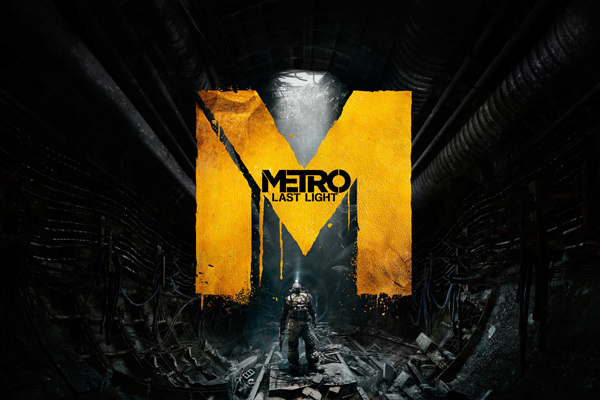Metro: Last Light
Developed by 4A Studios | Published by Deep Silver | Platforms: PC, PS3, XBOX360, PS4
Last year, THQ proved that even giants fall. In December THQ (one of the gaming industry’s biggest publishers with titles such as WWE and Saints Row under their belt) finally succumbed to the pressures of the economic downturn and filed for Chapter 11 Bankruptcy. I still have no idea what Chapter 11 Bankruptcy means, specifically, but what I do know is that this event has sent a ripple of anxiety through the gaming industry. Sure, THQ made some mistakes and many saw this coming, but still, when a giant falls, the whole world shakes.
THQ owned both a large number of gaming developers that made really high quality products, as well as the IPs (Intellectual property) of great franchises such as Red Faction and Darksiders. Thankfully, the gaming industry is full of opportunists, many of whom were watching the fall of THQ with bated breath and wallets at the ready. One of these studios left in the lurch was the small Ukrainian developing company, 4A Studios. Under THQ’s umbrella, 4A had released only one game – Metro: 2033, a first-person shooter based on the novel of the same name by Dmitry Glukhovsky. A game full of amazing ideas but unfortunately rough around the edges, THQ saw the game’s potential and 4A were offered a sequel, slated for last year. When THQ began to fall, many thought that would be the end for this small developer. Thankfully, they were bought by publisher Deep Silver and now finally we can play 4A’s sequel Metro: Last Light.
The Metro franchise is based in post-apocalyptic Moscow, 20 years after a devastating nuclear war. The vestiges of Russian society live underground in the Metro system; the radiation has mutated those left above and so mankind fights for their lives against the mutant species from above. One of these is the Dark Ones, humanoid creatures with telepathic powers and vague intentions. Metro: 2033 dealt primarily with the relationship between the humans and the Dark Ones.
Metro: Last Light has taken the inspired direction of investigating the different political factions that have emerged within the underground. The game has you playing once again as Artyom, a young Russian man born in the underground, as he travels the metro and has run-ins with the factions like the Nazi party Fourth Reich and the Communists living on the Red Line. This storyline gives the game a glorious dose of retrospection, and the dystopian setting allows you to see humanity bared and truly understand the intentions of political movements from the real world.
The story itself is a beautifully crafted rollercoaster; the events of the game are fast-moving and constantly surprising. The game’s best attribute is character development – not generally a strong point of first-person shooters – but Last Light presents a series of characters that are superbly written and thought out. You will end up caring for these characters and will no doubt be affected by the events around them.
The gameplay itself is a well-made first-person shooting experience. You have access to a range of very Russian-looking weapons like rifles, shotguns and pistols. Layered on top of the first-person shooting experience are additional challenges like keeping a good stock of air filters for your gas masks. Travelling outside requires you to wear a gas mask; however, the air is so damaged that the filters burn out in a matter of minutes, so you must keep a constant eye on your counter and change filters regularly. The game is full of these sorts of additional challenges which give it fantastic depth.
If the fall of THQ proves anything, it is that the gaming industry is willing to come to the rescue of a small but talented studio such as 4A studios. If they hadn’t, we would have missed out on the gem that is Metro: Last Light.




